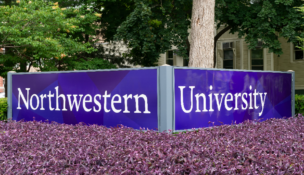Civil legal aid draws greater attention, support
By: Associated Press//December 27, 2023//
The United States spends an estimated $1.345 billion annually to provide free legal aid to people in need, according to the national Legal Aid and Defender Association.
However, there are still significant gaps in the availability of legal aid across the country and in Minnesota. Unlike the Sixth Amendment right to counsel in criminal proceedings, courts have not recognized a right to a lawyer in the vast majority of civil cases. This has made justice inaccessible for many low-income people.
However, this issue has been receiving more attention lately, and legal aid providers have been proactive in seeking more funding and finding ways to use resources more effectively.
The legal aid access issue was a prime topic at a recent webinar on the state of civil legal aid, held by the American Bar Association.
The Legal Services Corporation (LSC) is the largest funder of legal aid programs in the United States, providing about one-fourth of total funding. LSC is a federally funded nonprofit corporation which makes grant awards to 134 grantees nationwide. Additional sources of funding for legal aid include private foundations and donations, state funding often through state bar foundations, contracts and grants from federal, state and local government entities.
One problem is the uneven distribution of attorneys between urban and rural areas, said panel moderator Lincoln Caplan, an author and Yale University lecturer. Of more than 10,000 attorneys providing civil legal aid nationwide, about 1,700 are in New York state. Most of the legal aid attorneys are clustered in 55 metro areas. A 21-state area is served by only about 1,000 legal aid attorneys, he said.
“In many rural areas of America it can be difficult or impossible to find a legal aid lawyer to handle a civil problem,” he said. “Among the poor who need legal aid services, only about 8% succeed in getting help. There are many others who don’t realize they can get aid.”
“The good news is that over the last decade, the number of full time legal aid attorneys has increased significantly,” Caplan said.
Nationally, one of the most common areas where low-income people need legal help is being sued for debts, such as medical and credit card obligations, said Rebecca Sandefur, an Arizona State University professor and ABA faculty fellow. That stress “can lead to a lot of health problems, emotional, psychological and physical. So the costs extend beyond just dealing with the debt issue.”
Panelist Radhika Singh said legal aid attorneys should be considered “human services providers.”
“The people they are helping are facing life and death issues. Sometimes the difference in a client’s life is (made by) just holding their hand,” said Singh, a National Legal Aid & Defender Association vice president.
In Minnesota, legal aid officials say access mirrors the national picture, although progress is being made in making civil legal aid accessible to more people.
The state has 225 full-time legal aid positions with nearly 25 different organizations providing service, including six regional programs that receive most of the state funding, said Katy Drahos, access to justice director for the Minnesota Bar Association.
There are also targeted service programs that serve specific populations or geographic areas, she noted. Two examples are Minneapolis-based Tubman, which serves people struggling with relationship violence, substance abuse, mental health, and other forms of trauma, and the Immigrant Law Center of Minnesota.
“Legal aid is amazing, challenging work that helps keep a lot of families and communities stable,” Drahos said.
Greater Minnesota faces different issues than the metro area, Drahos said. In many rural areas of America, it can be difficult or impossible to find a Legal Aid lawyer to handle a civil problem. “In rural areas, there are fewer attorneys per population and larger service areas. Also, lack of broadband access in some areas can make court appearances challenging for both attorneys and clients. In the metro area, there is a higher volume of cases which makes it tough to meet the need at current funding levels.”
Being able to provide adequate funding for legal aid has been a perpetual problem, both nationally and in Minnesota. Earlier this year, the state budget surplus enabled legislators to approve “significant” increases for both public defense and legal aid in Minnesota, said State Rep. Jamie Becker-Finn, chair of the House Judiciary Committee. “We started asking legal aid and public defense folks ‘What do you need to be functional and sustainable?’ Historically they had only been asking for annual percentage increases of around 5%.”
Legal aid received an 85% increase in state funding, which was allocated this summer, she said. “I am starting to hear from people that the funds are going out to the different legal aid delivery systems.”
The money will enable the state’s LA providers to take on more cases and increase salaries “so we aren’t ‘bleeding’ attorneys to private practice,” Becker-Finn said. Prior to the funding increase, the starting salary for legal aid attorneys in Minnesota was $55,000, compared with an average of $70,000 for assistant county attorneys. Now we are up to $70,000 (for legal aid) and have made some pretty significant staffing gains in a few places.”
One of the largest outstate providers in Minnesota is Justice North in Duluth, which provides services to 11 counties in a service area of about 27,000 square miles, according to Executive Director Dori Rapaport. Justice North has a staff of about 40, including 15 attorneys.
The recent funding increase has enabled Justice North to narrow the gap in starting salaries, she said. “It allowed us to ‘move the dial’ on [annual] turnover from roughly 36% per year to closer to 24%. It’s still too high, so we have to keep working on increasing salaries,” Rapaport said.
Justice North is able to serve only about 45% of the applicants who are financially eligible, Rapaport said. We don’t have the staff and resources to help everyone who is eligible. We have to use case-acceptance priorities, so that we will have manageable and ethical caseloads.”
“A lot of people consider us the civil ‘answer’ to public defenders,” she said. “But a big difference is that the constitutional right to legal representation only applies to criminal matters, and not civil law.”
Another positive trend is that outstate Minnesota legal aid providers have been taking steps to get more out of their resources.
Holding “virtual court” using online connections like Zoom has been “a game changer” in rural access to justice, Rapaport said. ”We have 14 courthouses in our 11 counties and we have clients in all of those locations who are facing eviction.”
“There are rural ‘legal deserts’ in the state, where we are at serious risk of losing legal professionals year after year, due to retirement and recruiting challenges,” Rapaport said. “Having virtual court as an option has made all the difference.”
Minnesota’s six regional providers also started consolidating their court calendars, so that one judicial referee can be at all of the hearings for each region. “The courts realized that if we leverage technology we can serve four or five times more people” Rapaport said.
“We’re lucky that our courts pivoted the way they did to allow this; we’ve got our fingers crossed that this will be become permanent part of how we operate.
“The majority of our clients who are facing evictions are getting better outcomes, so that in itself has been huge,” she said. “It has made all the difference in addressing homelessness.”
Justice North has also developed a network of legal kiosks across the region so that financially eligible residents can seek legal aid and otherwise engage with the system, she said. “The technology allows people to meaningfully engage with legal matters.”
“Now, we’re in a position where other states are looking to us for how we provide rural access,” Rapaport said.
Legal News
- (Updated) Wisconsin law enforcement clash with pro-Palestinian Madison protestors
- Gov. Evers seeks applicants for Lafayette County Circuit Court
- Complaint against University filed by Wisconsin law firm over $1.9M given to Palestinian students
- Hush money trial judge raises threat of jail as he finds Trump violated gag order, fines him $9K
- Active shooter ‘neutralized’ outside Wisconsin middle school
- Audit finds Wisconsin Capitol Police emergency response times up, calls for better tracking
- Jury finds Wisconsin man sane in sexual assault, killing of toddler
- Attorney sentenced to 20 years in prison for sexually exploiting numerous children
- UW-Madison pro-Palestine protesters spark debate over free speech laws
- DEA to reclassify marijuana in a historic shift
- Wisconsin opens public comment on constitutional amendment regarding election officials
- Court upholds Milwaukee police officer’s firing for posting racist memes
WLJ People
- Power 30 Personal Injury Attorneys – Russell Nicolet
- Power 30 Personal Injury Attorneys – Benjamin Nicolet
- Power 30 Personal Injury Attorneys – Dustin T. Woehl
- Power 30 Personal Injury Attorneys – Katherine Metzger
- Power 30 Personal Injury Attorneys – Joseph Ryan
- Power 30 Personal Injury Attorneys – James M. Ryan
- Power 30 Personal Injury Attorneys – Dana Wachs
- Power 30 Personal Injury Attorneys – Mark L. Thomsen
- Power 30 Personal Injury Attorneys – Matthew Lein
- Power 30 Personal Injury Attorneys – Jeffrey A. Pitman
- Power 30 Personal Injury Attorneys – William Pemberton
- Power 30 Personal Injury Attorneys – Howard S. Sicula












